What can the ancient tattoos of two prehistoric mummies tell us?
Tattoos are a statement of personal identity and cultural heritage. We associate them with our modern society, but the truth is that the history of tattoos spans many thousands of years and various early civilizations. However, scholars are still uncertain about how early man perceived the body markings or why the got them. Here we take a look at the two oldest tattooed mummies in the world, Ötzi the Iceman and El Morro Man, to see what the experts have to say about the meaning of ancient tattoos.
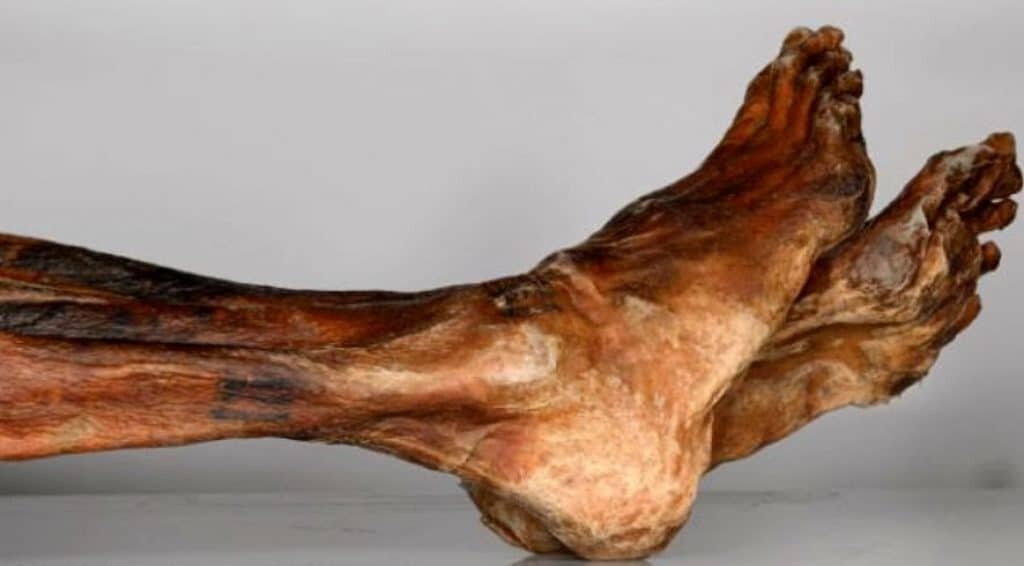
El Morro Man
In 1983, workers in the region of Arica, Chile, were completing the construction of a water line when they made a fascinating discovery. They unearthed a number of graves containing mummified remains. Archaeologists were subsequently summoned to the site and recovered 96 bodies, most of which were remarkably preserved. The bodies belonged to the Chinchorro culture, and it was also determined that the mummification of most of these bodies was deliberate.
Bog Bodies of Europe: The Most Famous of Peatland Mummies
One mummy, in particular, from the El Morro site piqued the interest of researchers. This body belonged to a Chinchorro male who appears to have been between 35-40 years of age when he died. Initially, scientists dated the mummy to 8,000 years Before Present. Located on the upper lip of the mummy, just to either side of the nose, are a series of black dots that form what seems to resemble a thin mustache. Interestingly, the presence of these markings is unique to this Chinchorro male, since to date, no other mummies from the culture bear similar tattoos.
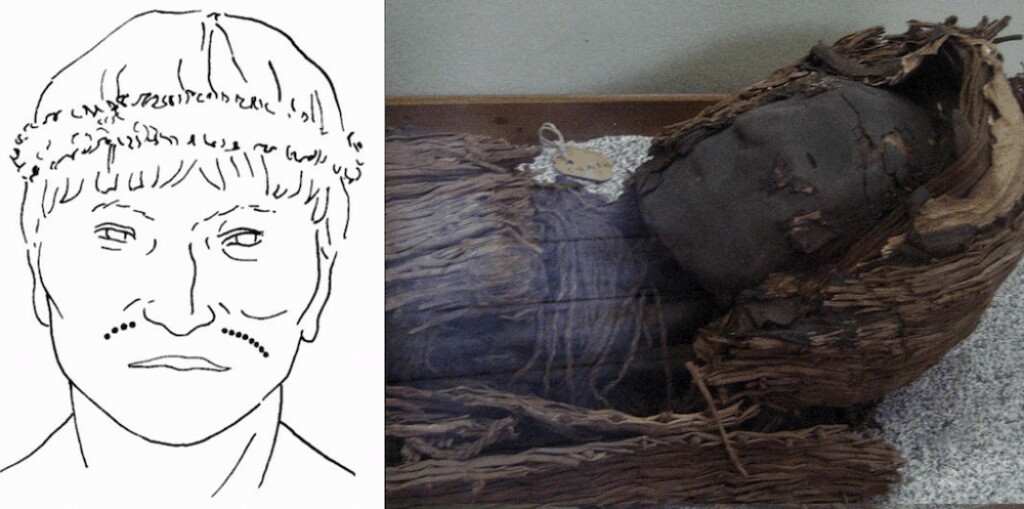
The discovery begs some important questions. What did markings symbolize to the Chinchorro culture? Do they indicate some special social status or tribal leadership? The answers to these questions remain unclear. Therefore, researchers continue their work today in an effort to unmask the mystery of ancient tattoos and their symbolic significance.
For several years, scientific evidence supported the conclusion that the El Morro Man had the oldest tattoos. This changed in 1991 with the accidental discovery of a mummy that became an international superstar in the archaeological community.
Ötzi the Iceman
On September 19, 1991, Helmut and Erika Simon were exploring a ridge in the Ötztal Alps near the border of Austria and Italy. As they veered off their primary path, the couple came upon a startling discovery. There before them were human remains encased in ice up to the torso. The explorers believed that they had found the body of a lost mountaineer.
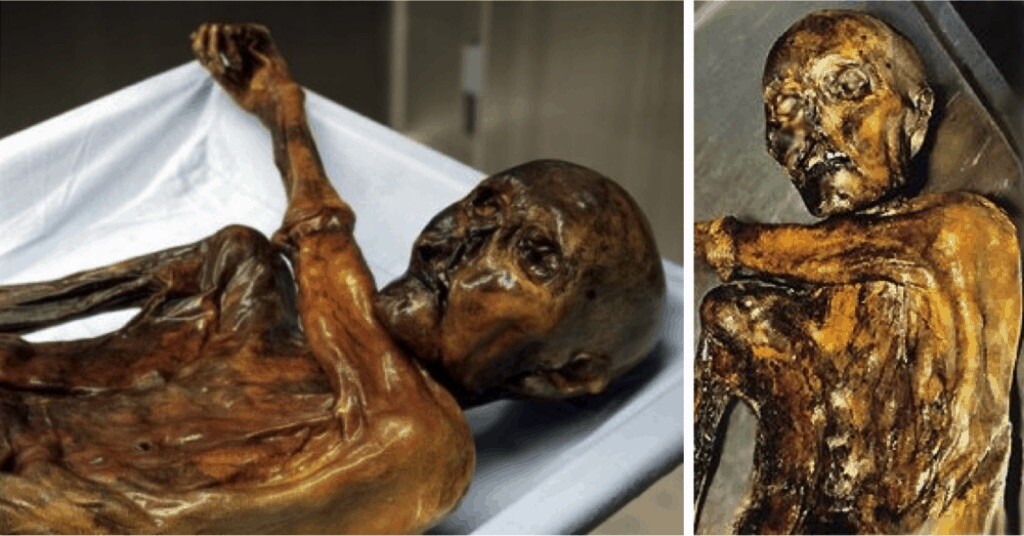
A local law enforcement officer attempted to extract the body from the ice with crude tools. However, his efforts failed, and a team of expert mountaineers managed to recover the body four days after its discovery. Konrad Spindler, an archaeologist in Innsbruck, examined the remains.
The initial dating performed by Spindler indicated that the mummy was approximately 4,000 years old. Researchers named the mummy the “Tyrolean Iceman” or “Ötzi,” due to the region in which he rested all those years, and they began a detailed examination of his remains. Without question, the most intriguing aspect of the mummy was the presence of 61 ancient tattoos. Most of them were black lines configured into specific groups on various parts of his body.
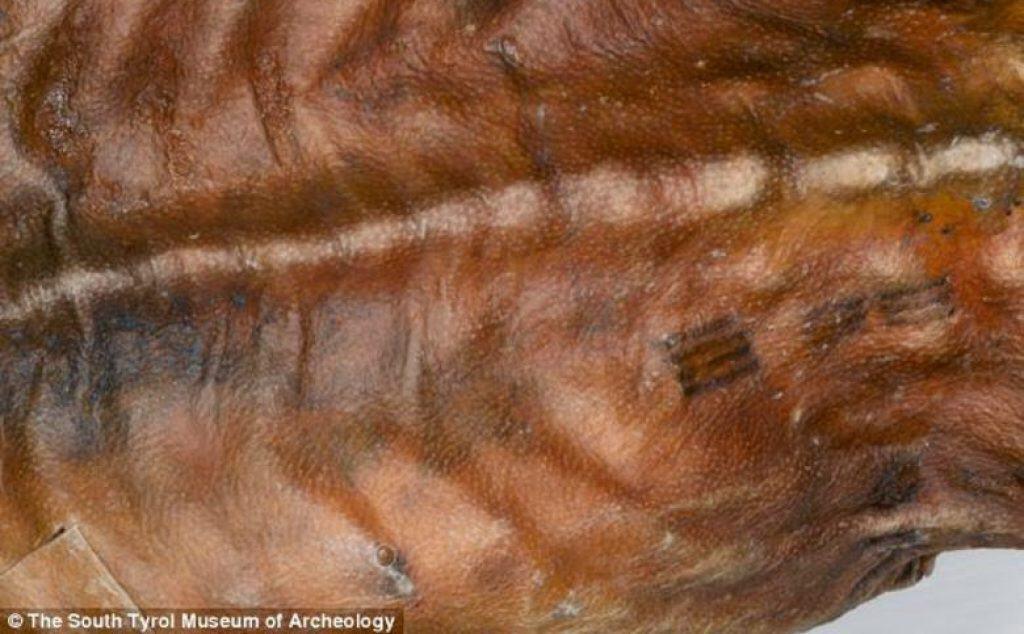
Ötzi’s Markings Align With His Ailments
Experts determined that people used soot or fireplace ash to create the pigment for tattoo making. Researchers also noted a strange correlation between the placement of Ötzi’s body marks and evidence of physical degeneration. The man suffered from a variety of physical ailments which included osteochondrosis, a debilitating joint disorder. Hence, many researchers speculate that the symbols may relate to acupuncture and an attempt to relieve discomfort.
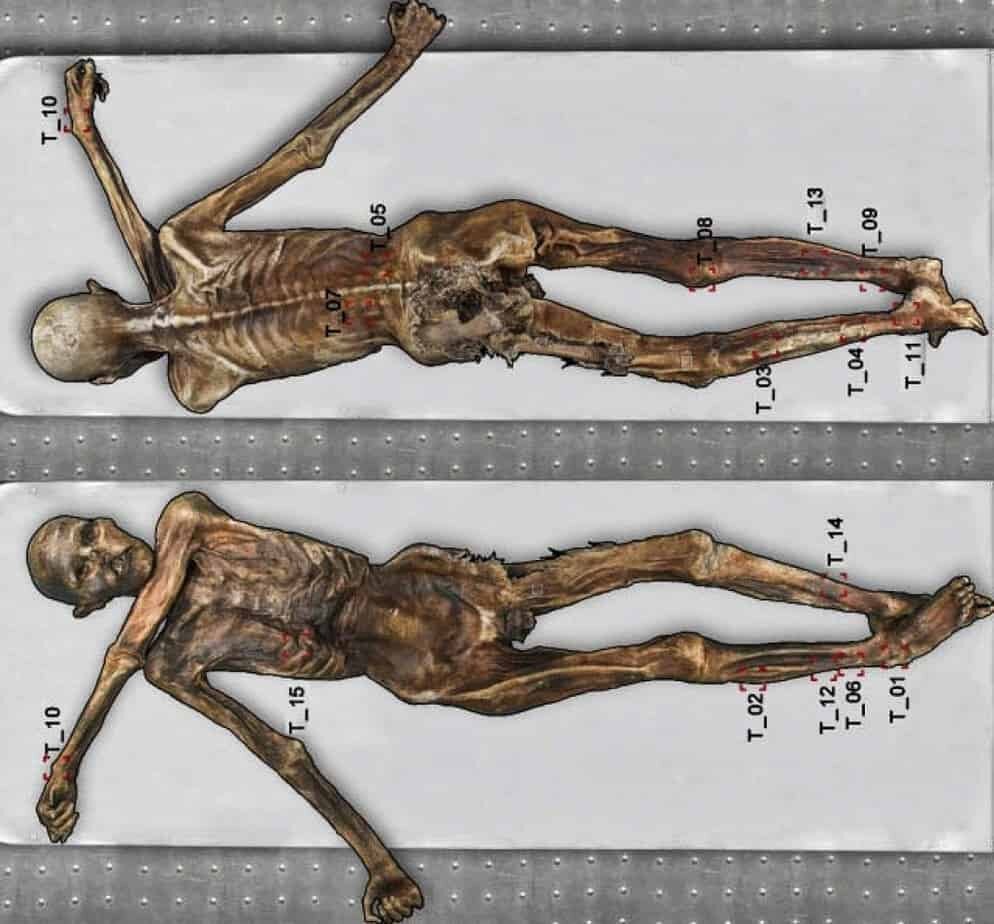
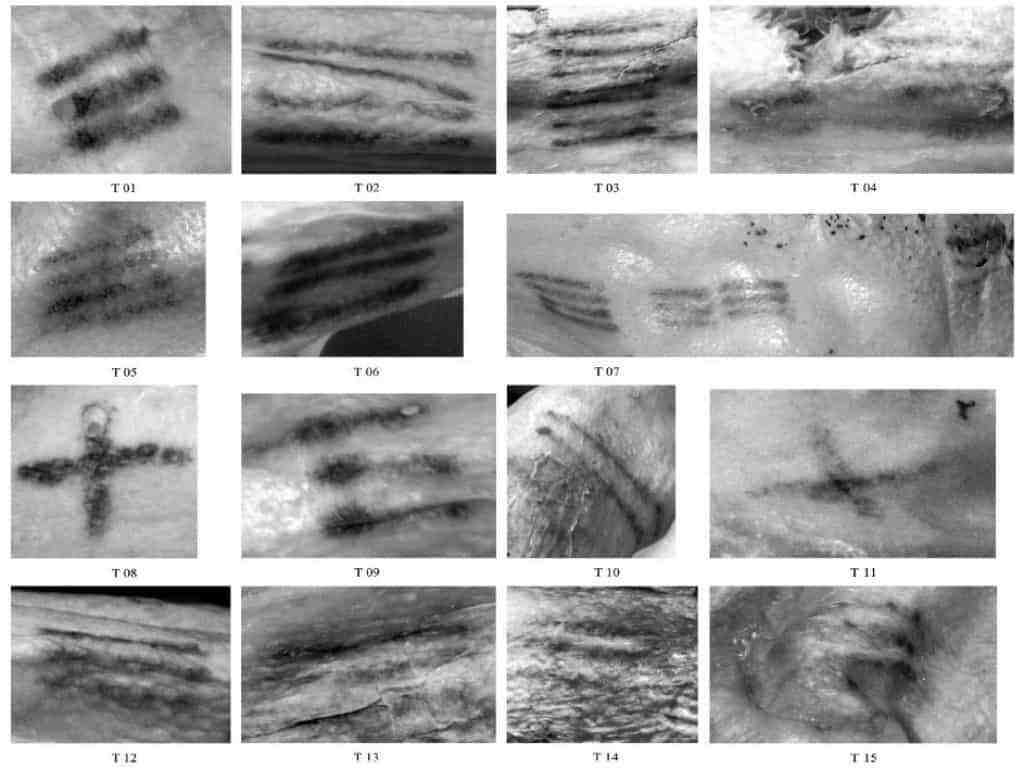
A New Date For the El Morro Man
In the intervening years since the discovery of the Chinchorro mummy and Ötzi the Iceman, sophisticated dating models have conclusively established that the Iceman is the older of the two. El Morro Man actually died sometime between 2563-1972 BCE. Thus, it appears the original estimates of the age of the Chinchorro Man were in error. Most scholars now agree that Ötzi died around 3250 BCE and is the oldest tattooed mummy.
Purposes of Ancient Tattoos
Once scholars fully analyzed the El Morro mummy and Ötzi, two interesting theories emerged about the meanings of tattoos in history. Both of them suggested that these motifs were more than simple attempts to ornament the human body.
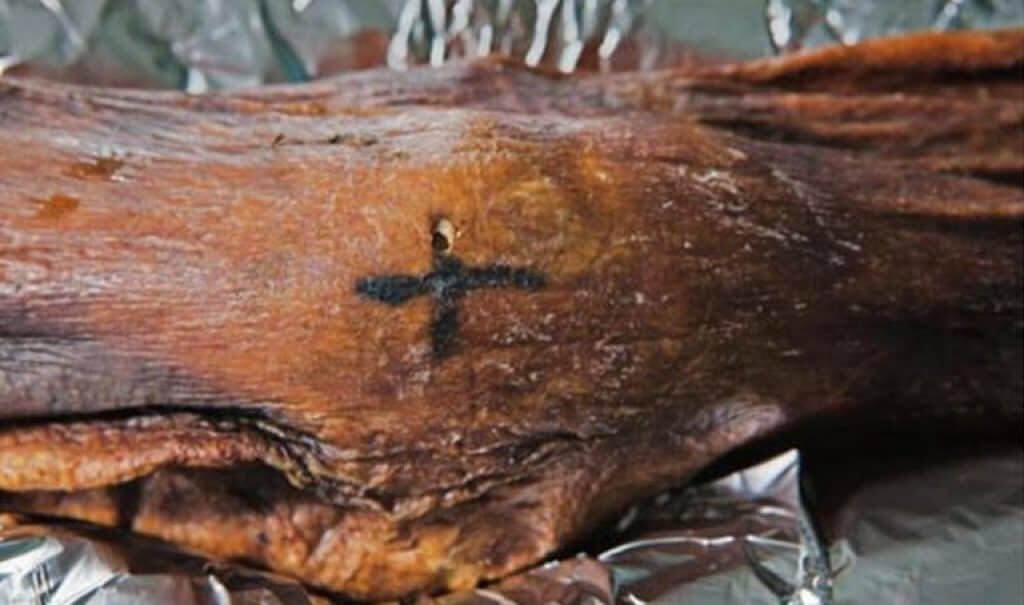
Social Status or Allegiance
As in the case of the El Morro mummy, the presence of tattoos on ancient people could relate to social status or tribal allegiance. There is some later provenance to support this theory, namely among Polynesians. The word tattoo actually derives from the Polynesian word tatau, meaning to write. To this day, the Samoan pe’a or tatau is a custom that they have honored for 2,000 years. Samoan tradition asserts that the first tatau, or the first tattoo, originated from two Fijian women, Taema and Tilafaiga. Interestingly, Samoans still use soot as a pigment for many cultural tattoos. This also corresponds with the manner in which the Iceman received his body ink.
Because the Chinchorro mummy from Chile is the only one of his kind to sport body markings, there may be some basis to theorize that this male was a leader of the tribe. Also, the idea that only one Chinchorro would have adorned himself with ink as mere body art may be implausible. Clearly, he was special in some way.
Relief From Pain
Ötzi the Iceman presents a more interesting puzzle since there is ample evidence suggesting that his body ink may result from primitive medical procedures. If this is true, it means that acupuncture could have existed long before what experts believe to be its earliest use in China around 1000 BCE.
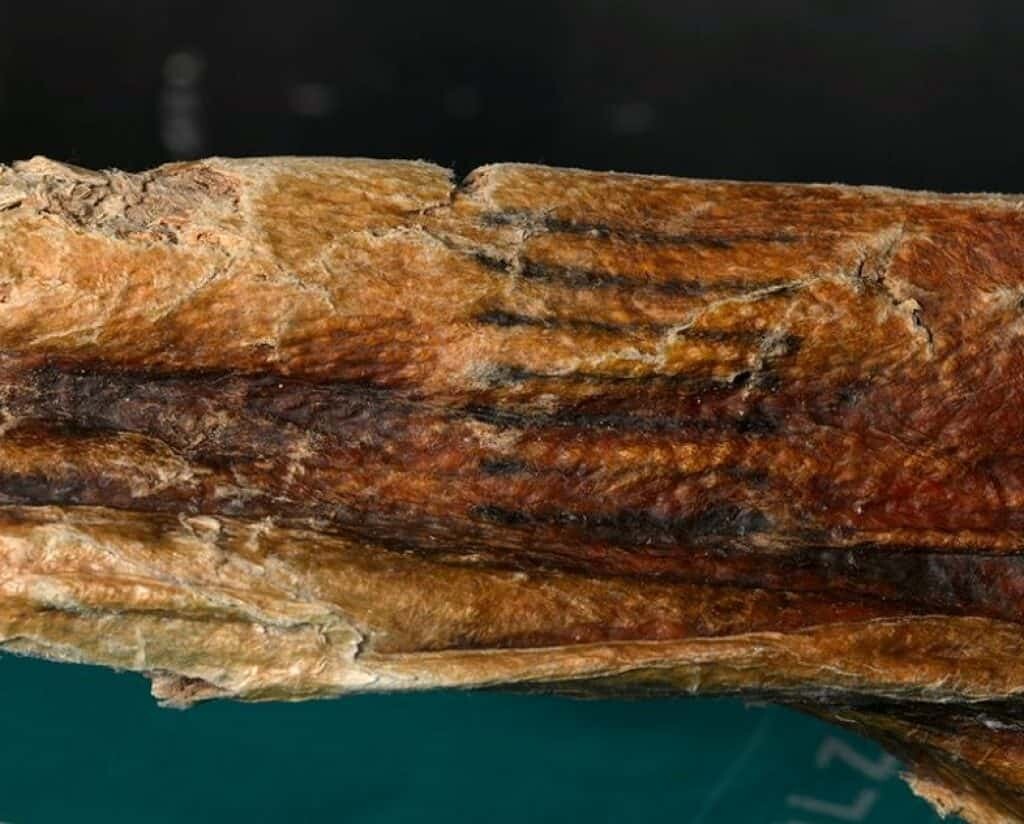
According to an article in the Smithsonian magazine, anthropologist Lars Krutak asserts that 80% of Ötzi’s markings align with classic Chinese acupuncture points for the treatment of rheumatism. Hence, in 2011, a Denmark tattoo artist and friend of Krutak’s named Colin Dale decided to conduct a simple experiment. Dale applied a series of body ink to a client that suffered from numerous ailments including asthma and rheumatism. Additionally, an acupuncturist assisted with the placement of the tattoos.
Dale reported that within three months of receiving the ink, the client’s symptoms had either diminished or disappeared entirely. While this study did not satisfy the strict requirements of the scientific method, it does provide food for thought for the possible purpose of body art in the oldest cultures around the world.
Tattoos Tell Stories
What the current knowledge of tattoos demonstrates is that they are a unique form of narrative traceable to the earliest civilizations of mankind. Whether the markings on the oldest mummies revealed aspects of the individuals’ character, their medical history, or their standing within their culture, body ink undeniably helped to define who they were thousands of years ago.
You May Also Like:
Disturbing Rites of Passage From Around the World
References:
Archaeology
CNN
University College London
Smithsonian Insider